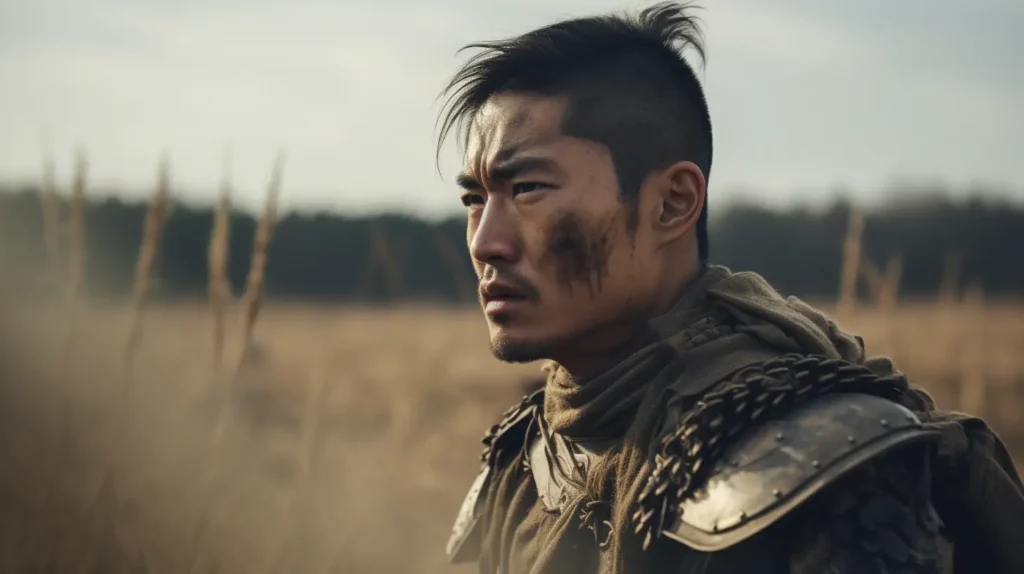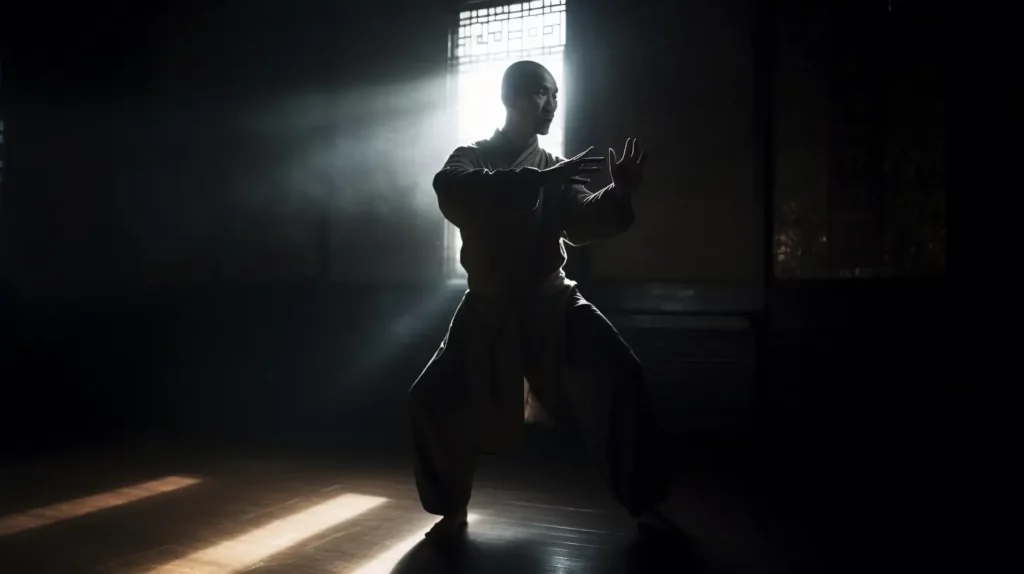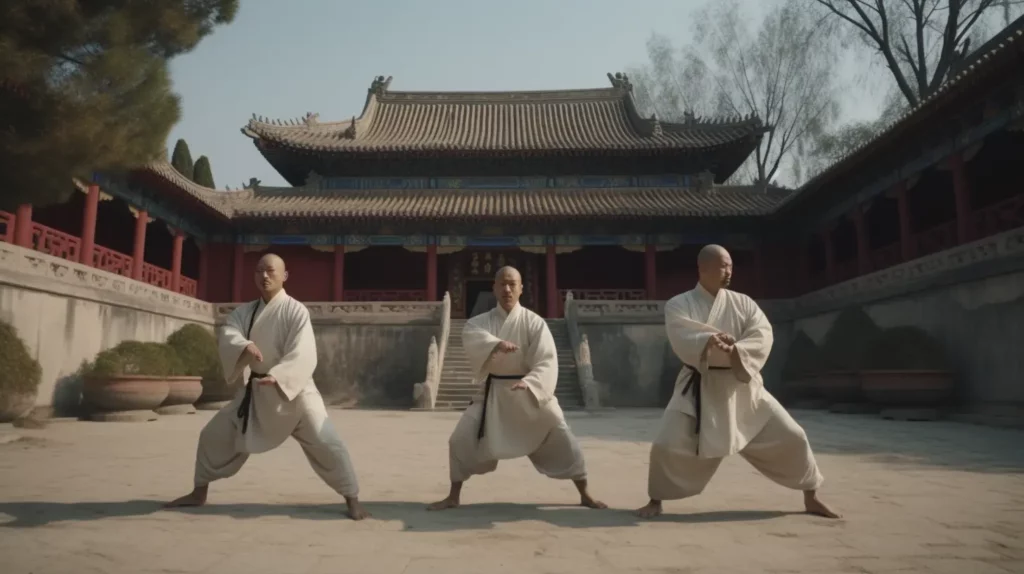Wushu styles? You may be scratching your head right now, wondering what on Earth that phrase means. But fear not, my curious friend! We’re here to explore this ancient world together. For those who haven’t heard of wushu it’s an ancient Chinese martial art with roots going back thousands of years. It’s also commonly known as kung fu (shout-out to Hollywood) and has gained quite some popularity around the globe.
In this article, we’ll dive deep into the world of wushu styles and learn everything from their fascinating origins to their incredible techniques. So grab your nunchucks (or maybe just a cup of tea) and let’s get started!
The Birth of Wushu

Wushu originated in China around 4,000 years ago during the Xia Dynasty. It was initially developed as a form of self-defense and warfare for soldiers in battle. As time went on, wushu evolved into more than just a military skill; it gradually became an essential part of Chinese culture.
The different styles emerged over time as masters created unique techniques based on their experiences, beliefs, and environments they lived in. This vast array of wushu styles is what makes this martial art so diverse and intriguing today.
The Shaolin Connection
When someone mentions “kung fu,” most people immediately think about the legendary Shaolin Temple hidden deep within the mountains of China. And it’s no wonder why! The Shaolin Temple, also known as the birthplace of Zen Buddhism, has played a significant role in the development and promotion of wushu.
Within the temple’s walls, monks have practiced and perfected various wushu styles for centuries. These styles are typically grouped into two categories: internal (focused on mental and spiritual development) and external (focusing on physical strength and agility). The Shaolin Temple is still an active training ground today for wushu practitioners from around the world.
Wushu Styles Unveiled
Now that we’ve laid the groundwork let’s dive into some popular wushu styles. There are hundreds to choose from, each with its unique techniques, philosophies, and history. But don’t worry – we’ll only cover a handful here to give you a taste of what this fascinating martial art has to offer.
Changquan (Long Fist)
First up is Changquan, also known as Long Fist due to its emphasis on long-range strikes and fluid movements. This style is believed to have originated during the Ming Dynasty and is one of the most popular modern wushu styles today. Changquan’s techniques involve big leaps, spins, high kicks, and powerful punches – making it an impressive sight!
Nanquan (Southern Fist)
Next up is Nanquan or Southern Fist, which originated in southern China during the Song Dynasty. This style emphasizes strong stances, low kicks, fast footwork, and powerful hand techniques like palm strikes and punches. If you’re not careful around a Nanquan master, you might find yourself swept off your feet before you know what hit you!
Taijiquan (Tai Chi)
You’ve probably heard of Taijiquan, commonly known as Tai Chi. This slow, graceful practice is often seen in parks and community centers worldwide. But don’t be fooled by its seemingly gentle nature – Taijiquan is a formidable wushu style that focuses on internal energy (or “chi”) cultivation and control.
Originating around the 17th century, this style emphasizes breathing techniques, fluid movements, and mental focus. While it may not look like an intense workout at first glance, those who practice Taijiquan can attest to its strength-building and health-enhancing properties.
Baguazhang (Eight Trigram Palm)
Baguazhang, or Eight Trigram Palm, is another wushu style that puts a strong focus on internal energy development. Developed during the Qing Dynasty, Baguazhang relies on circular footwork patterns called “circle walking” combined with powerful palm strikes.
This unique style has inspired many tales of martial arts masters who could defeat opponents without even breaking a sweat – simply by redirecting their enemy’s energy!
Wing Chun

Made famous by legendary martial artist Bruce Lee and his teacher Ip Man, Wing Chun is a wushu style that emphasizes close-range combat techniques. It was developed during the Qing Dynasty by a woman named Ng Mui – proving that wushu isn’t just for tough guys!
Wing Chun practitioners are known for their rapid-fire punches, lightning-fast footwork, and uncanny ability to deflect incoming attacks with ease.
Wushu Today
With such a rich history behind it, wushu continues to thrive in the modern world. In addition to traditional styles being practiced globally, contemporary wushu has evolved into a competitive sport showcasing incredible athleticism, strength, and artistry.
Wushu competitions now feature categories for both traditional and contemporary forms (known as “taolu”) and full-contact sparring events (called “sanda”), drawing in enthusiastic crowds of spectators.
How to Choose the Right Wushu Style for You
With so many incredible wushu styles to choose from, you might be feeling a bit overwhelmed as you try to pick the perfect one for you. But fear not – we’ve got some helpful tips and guidelines to assist you in finding the ideal style that aligns with your personal interests, goals, and fitness level.
- Identify Your Goals
The first step in choosing the right wushu style is to determine your primary objectives for practicing martial arts. What do you hope to achieve? Some common goals include self-defense, physical fitness, mental health improvements, spiritual growth, or even just having fun and learning something new. By clearly identifying your goals, you’ll have an easier time selecting a style that aligns with what you want to accomplish.
- Consider Your Physical Abilities
Next up, it’s essential to consider your current physical abilities and limitations when choosing a wushu style. Some styles require more flexibility and agility (such as Changquan), while others focus on strength and stability (like Nanquan). Think about what type of movement suits your body best and whether you’re looking for something more energetic or calming.

If you have any pre-existing health conditions or injuries, consult with a healthcare professional before starting a new exercise regimen like wushu.
- Research Different Styles
As we’ve learned earlier in this article, there are numerous different wushu styles available, including animal styles – each with its unique techniques, philosophies, and origins. To find one that resonates with your personality and interests, spend some time researching various styles online or at a local library. Watch videos of practitioners demonstrating forms and techniques to get a feel for the energy and movements of different styles.
- Visit Local Schools or Studios
Once you have some knowledge about various wushu styles, it’s time to take your search to the streets! Visit local martial arts schools, studios, or community centers that offer wushu classes. Observe classes in session (with permission) or attend open-house events to get a feel for each school’s teaching style and atmosphere.
- Try a Few Styles
The best way to know if a particular wushu style is right for you is by giving it a try! Many schools and studios offer introductory classes or workshops where you can learn basic techniques and get a taste of what practicing that style entails. Don’t be afraid to explore multiple styles before committing – it’s all part of the journey!
- Talk to Experienced Practitioners
Seek advice from experienced wushu practitioners who have been in your shoes before. Ask them about their experiences, how they chose their current style, and any recommendations they might have for beginners. Their insights can be invaluable as you navigate your own path in the world of wushu.
- Trust Your Intuition
Finally, trust your gut when choosing the right wushu style for you. Pay attention to how you feel while practicing each style and which one brings you the most joy, excitement, or sense of accomplishment. Remember that finding the perfect fit may take some time – but once you discover the ideal match, your martial arts journey will truly come alive!
Selecting a wushu style is an exciting and personal process that involves self-discovery and exploration. By considering your goals, physical abilities, researching different styles, visiting local schools or studios, trying various styles, consulting with experienced practitioners, and trusting your intuition, you’re sure to find the perfect wushu style that complements your unique interests and needs. So go forth, future wushu master, and embark on this thrilling journey into the world of Chinese martial arts!

